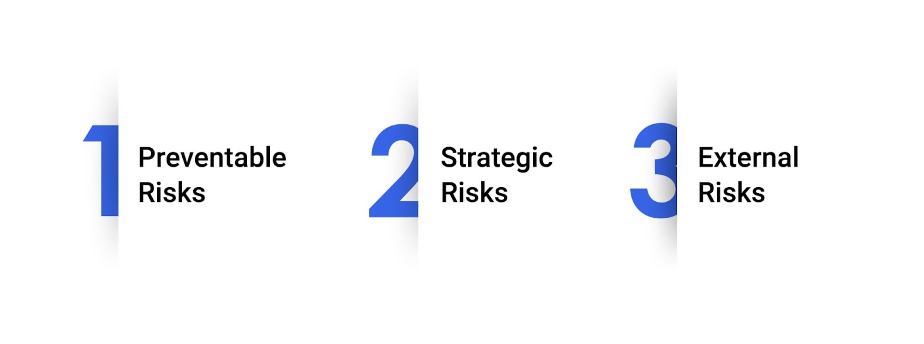Risk might not be the first thing you associate with accounting. Accounting has unique risks that can lead to significant consequences. Managing these risks is key to an accounting firm’s stability and success. Risk management helps teams spot and fix issues before they slow down a project. A good risk plan keeps everyone focused on solutions and staying on track.
ISACA’s study shows that 52% of cybersecurity experts see more cyber-attacks this year. But, only 8% of companies assess cyber risks monthly, and 40% do so yearly.
We need to control inflation and reach full employment to manage risks- Charles L. Evans.
This guide covers key accounting risks and a 5-step plan for success.
What Is Risk Management in Accounting?

Risk management in accounting identifies and prepares for potential threats to your business. These threats include cybersecurity breaches, compliance issues, and employee disputes. A risk management plan helps expect challenges and reduce their impact. Accounting firms must be proactive to stay competitive and maintain client trust. A strong risk management plan protects your firm, client data, and reputation.
A risk management plan helps your team prepare for risks in advance. Risks are potential problems, while issues are existing ones. A good plan keeps the project on track and within budget. It’s best to create it early but can also help fix ongoing problems.
Market risks and regulations are always changing. Bloomberg’s risk management solution offers real-time data, ensuring consistency and regulatory compliance. It integrates with your systems to manage risks and identify matching opportunities.
According to HBR, Risk management isn’t about rules; it won’t prevent major events like Deepwater Horizon or the 2007-2008 crisis. Robert S. Kaplan and Anette Mikes outline three types of risks: preventable (internal mistakes), strategy (risks for business growth), and external (e.g., disasters or economic changes). Companies need different strategies: rules for preventable risks, discussions for strategy risks, and tools like planning for external risks.
Risk Management Tools
- Diversification: Spread your investments across different areas like stocks, bonds, and real estate. This helps balance any losses.
- Hedging: Use options or futures to protect against losses in major investments.
- Insurance: Auto, health, and life insurance protect against accidents or illness.
Common Types of Risks in Accounting

Preventable Risks: You can and should avoid these internal risks. These are issues like HR disputes or compliance oversights that offer no value. For example, hiring without clear performance guidelines can lead to disputes. Having clear policies and an employee handbook can prevent such issues.
Strategic Risks: These risks are often taken for strategic gain. For example, A unique marketing strategy may be risky but could provide a competitive edge. But, if it backfires, it could lead to client loss or reputation damage. Strategic risks can be worth taking, but they need careful planning.
These risks are beyond control, such as economic recessions or unexpected regulations. The coronavirus pandemic drove major disorders in accounting. You can not control these risks, but you can plan to lessen their impact.
Top Risks for Accounting Firms
- Cybersecurity: As accountants manage susceptible financial data, data security is important. A malware attack or data leak can damage finances and reputation. Use data protection and 2FA to save customer data.
- Regulatory Compliance: Each area has its rules and conditions for accounting practices. Staying compliant needs standard training and updates to avoid penalties or fines. Confirming your team is up-to-date on all applicable rules and policies is essential.
- Reputation Risks: Online feedback and reviews can create or damage a company’s reputation. Negative reviews from clients or former employees can discourage potential clients. Establishing a feedback system and addressing concerns can help protect your reputation.
Creating an Effective Risk Management Plan

Identify what could go wrong.
Brainstorm potential risks in preventable, strategic, and external categories. Be thorough including risks specific to accounting, such as data breaches or tax law changes. Creating this list will provide you with a full picture of what could impact your firm.
Assess each risk to understand its likelihood and potential impact
Consider questions like: How likely is this risk to occur? How severe would the consequences be? Focus on factors like financial impact, regulatory issues, and reputational damage. Ranking risks by importance helps focus resources on the biggest threats to your firm.
Create strategies to reduce the impact of each risk
For example:
Partner with trusted services and train staff for cybersecurity.
For compliance, stay updated on regulations, attend training, and create a checklist.
Communicate, provide excellent service, and address feedback for compliance. Consider outsourcing to manage complex risks like compliance and cybersecurity.
Share the plan with your team so they know the risks and their role.
For instance, If managing susceptible data, your team should know how to spot and react to phishing dangers. Adequate training can turn your staff into the first line of defense against different risks. Regular training keeps employees aware of risks and encourages reporting potential issues.
Check and edit your risk management program to confirm it’s still applicable.
Risk management is not a single task. As your business grows, further risks may occur, and previous risks can vary. Stay updated on trends to expect risks before they arise. An agile risk management plan keeps your firm resilient to challenges. By identifying and adjusting to new risks, you’ll keep your firm better protected over time.
Define what your financial targets are, like budget limits, cash flow goals, or revenue targets.
Unexpected costs, revenue drops, rule changes, and financial errors create risks so its important to have a budget for comparison. One can also choose team members to oversee specific areas, such as compliance, budgeting, or financial reporting, so each risk has a clear owner. Templates can simplify your process by offering a structured way to log, assess, and track financial risks.
Why Insurance Is Essential for Accountants
No risk management plan is finished without considering risk transfer options, such as insurance. Skilled liability insurance, for instance, can cover lawful expenditures if a client files a claim for omissions or mistakes. This insurance allows your company to manage expensive legal actions, so you can concentrate on helping customers.
Integrating insurance into your risk management plan provides peace. You can’t handle every risk, but the proper coverage saves your company from significant economic failures.
Conclusion
Risk management in accounting may not be compelling, but it’s important for your firm’s success. A strong risk strategy keeps your business adaptable, compliant, and secure. Outsourced accounting and the right insurance will help you handle challenges ahead. Effective risk management strengthens your firm for long-term success.


